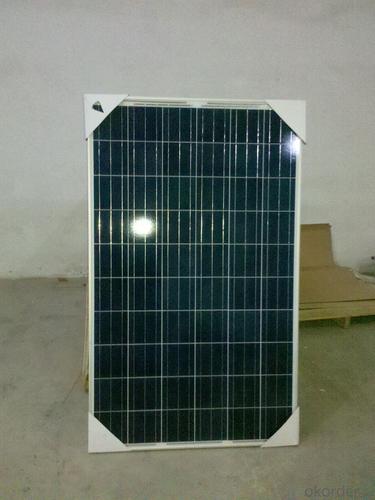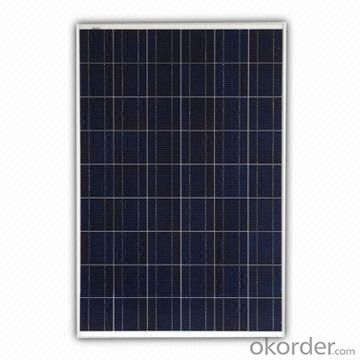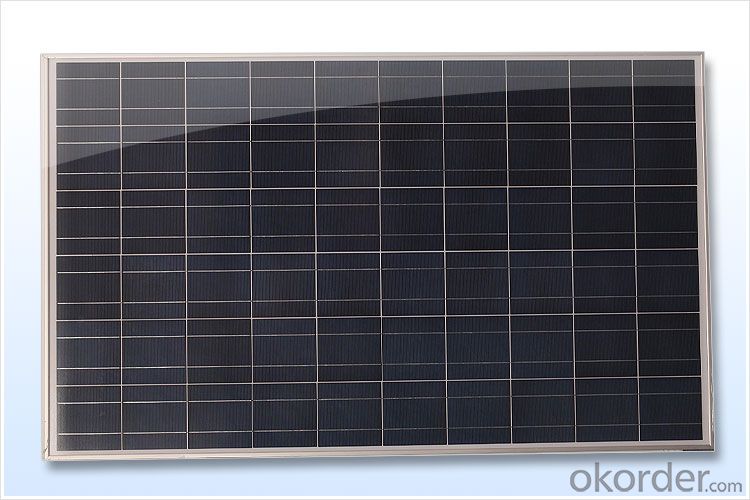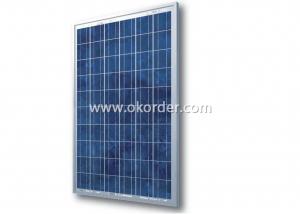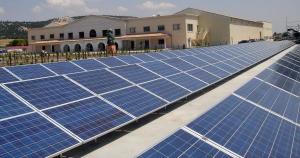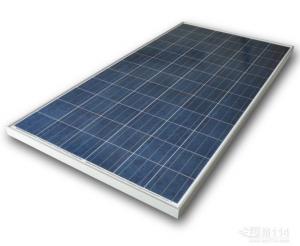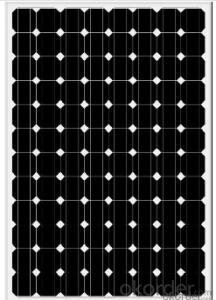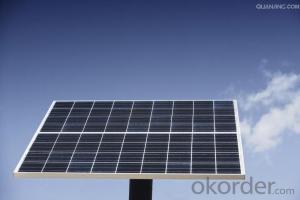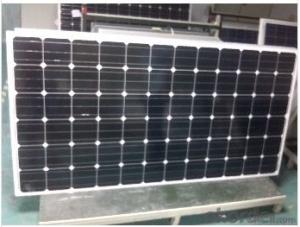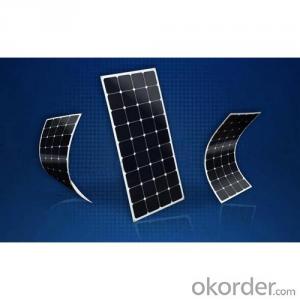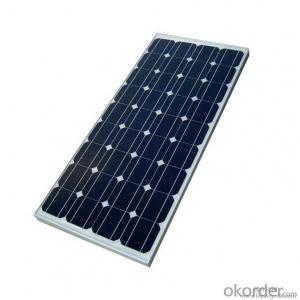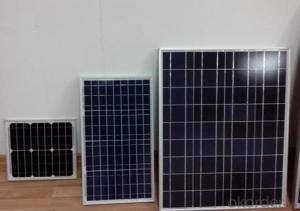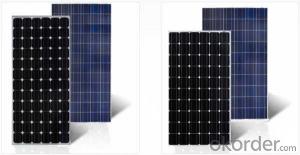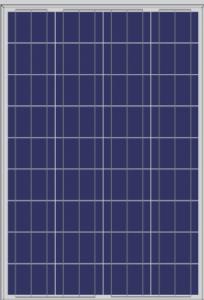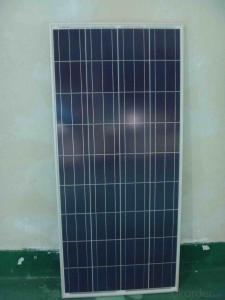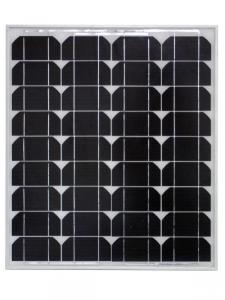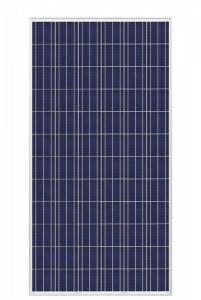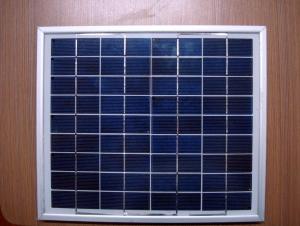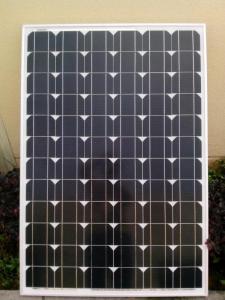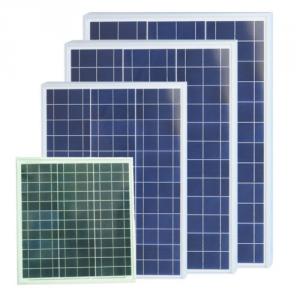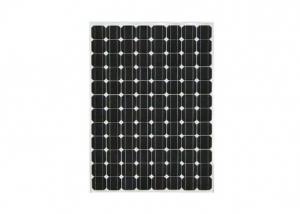Commercial Grade Solar Panels - Solar Polycrystalline 156mm Series (130W-150W)
- Loading Port:
- Shanghai
- Payment Terms:
- TT OR LC
- Min Order Qty:
- 1000 watt
- Supply Capability:
- 20000000 watt/month
OKorder Service Pledge
OKorder Financial Service
You Might Also Like
Specification
1.Structure of Solar Module Description
Solar Polycrystalline 156mm Series (130W-----150W)
2.Characteristics of the Solar Module
| Max Power Voltage Vmp (V) | 17.5 | 17.8 | 18.0 |
| Max Power Current Imp (A) | 7.42 | 7.86 | 8.33 |
| Open Circuit Voltage Voc (V) | 22.0 | 22.4 | 22.6 |
| Short Circuit Current Isc (A) | 8.10 | 8.34 | 8.91 |
| Max Power Pm(W) | 130 | 140 | 150 |
3.Limits of the Solar Module
Operating Temperature ﹣40℃to+85℃
Storage Temperature ﹣40℃to+85℃
Max System Voltage 700V
4.Specifications of the Solar Module
| Power | 130W/140W/150W |
| Dimension | 1470x670x30mm |
| Weight | 11.7kg |
| Tolerance | ±3% |
The dimension of the modules can be changed according to the demand of clients
5.Guarantee of the Solar Module
| Products Guarantee | 2 yrs free from defects in materials and
workmanship |
| Performance Guarantee | No less than 90% within 10yrs and no less than 80% within 20yrs |
| Certificates | IEC,ISO,TUV,CE |
6.Applications of the Solar Module
1.Electricity
2.Heat energy
7.IMages of the Solar Module
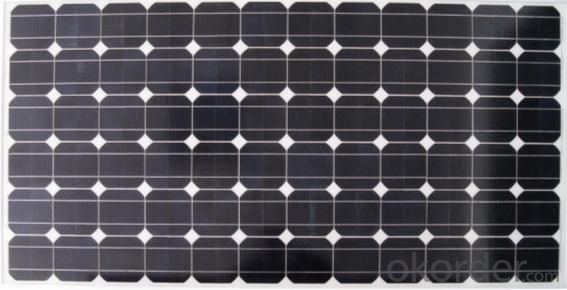
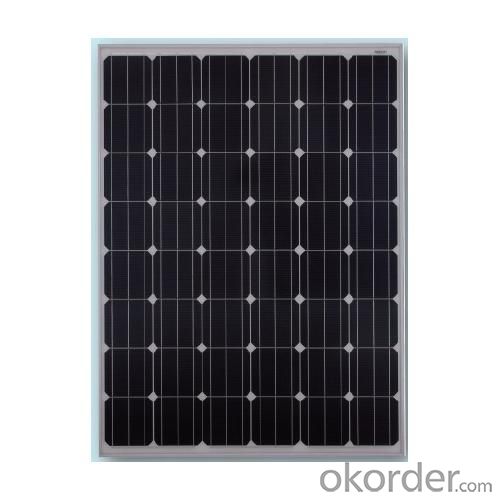
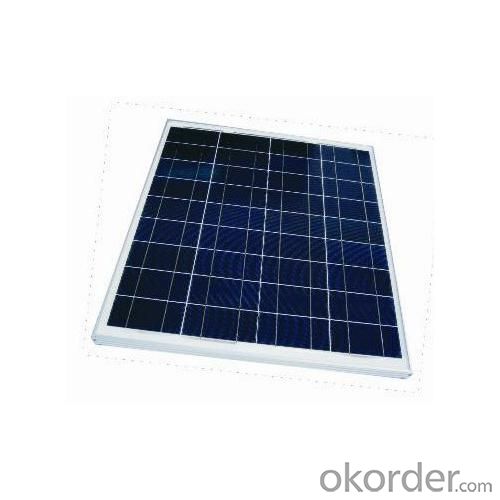
FAQ
1. Q: Do you have your own factory?
A: Yes, we have. Our factory located in Jiangyin city, jiangsu province.
2. Q: How can I visit your factory?
A: Before you take off from your country, please let us know. We will show you the way,or arrange time to pick you up if possible.
3. Q: Do you provide free sample?
A: Usually we do not offer free sample
4. Q: Could you print our company LOGO on the nameplate and package?
A: Yes, we can do that.
- Q: Can solar panels be installed on a sports stadium or arena?
- Yes, solar panels can be installed on a sports stadium or arena. Many stadiums and arenas around the world have already installed solar panels to generate clean and renewable energy. These panels can be mounted on the rooftop, parking structures, or even integrated into the facade of the building. The large surface area of stadiums and arenas makes them ideal for harnessing solar energy and reducing their carbon footprint.
- Q: Can the solar panels available be coated with a material (to improve it's looks) and not alter it's efficiency?
- No. The only coatings I am aware of are those that reduce reflection so more light gets through the protective surface to the actual cells. Anything thing that affects appearance is going to be reflecting light back to the viewer and the photons of that light are not available for electricity or heat. If the appearance of the panels offends you, then they need to be concealed by a fence of panels around them that do not throw shadows on the panels.
- Q: I've seen a couple homes around my town that have solar power and I live in the Desert, where the sun is shinning and it gets really hot during the summer. We run our air conditioner a lot making our electricity bill high.So I just wanted to know if anyone has or knows anyone that has solar panels? are they worth getting and is it the same as having electricity?
- and, if given the tax credits, you'll see a faster return on investment in CA than I would have in Western PA (I was given a 0 year return number without factoring any tax credits). Plus you'll be doing something good for the environment. My brother put his house for sale which had solar panels for hot water, and was offered good money for the solar panels independent of selling the house. If anyone has a any no answer that doesn't involve the initial expense, I'm looking forward to reading it.
- Q: How do solar panels affect the electrical grid?
- Solar panels affect the electrical grid by supplying clean and renewable energy. When solar panels generate excess electricity, it can be fed back into the grid, reducing the overall demand for fossil fuel-based power generation. This helps to stabilize the grid and reduce carbon emissions. However, the intermittent nature of solar power can create challenges for grid operators in managing variations in supply and demand.
- Q: Can solar panels be used in areas with frequent thunderstorms?
- Yes, solar panels can be used in areas with frequent thunderstorms. While thunderstorms may temporarily reduce the amount of sunlight reaching the panels, they are designed to withstand harsh weather conditions, including thunderstorms. Additionally, the intermittent cloud cover during thunderstorms does not completely eliminate solar energy generation, as panels can still capture diffused sunlight.
- Q: Can solar panels be used on boats or marine applications?
- Yes, solar panels can be used on boats or marine applications. In fact, they are becoming increasingly popular for providing renewable energy on board boats, yachts, and other marine vessels. Solar panels can generate electricity to power various onboard systems, including navigation equipment, lighting, refrigeration, and charging batteries. They are a sustainable and efficient way to harness solar energy while minimizing reliance on traditional fuel sources.
- Q: I know that the Solar panels store the power from the sun in the daytime, where does that stored energy go from there? Is it stored in the batteries? And how would you keep the batteries topped up if you had no Electric? by a generator? interested in solar panels for abroad, but need more info.
- solar panels collect the suns energy and turns that into electricity that is then stored in batteries. attached to the batteries is another device that takes the power from the batteries and turns it into power you can use in your house. it is a very expensive power alternative.
- Q: i need to make a mini-solar car which shouldn't cost much. it's for my science project. for now, i just found out how to make a solar panel using copper oxide, but it does not generate enough power to power up the engine of the toy car [ the small engine they used in the toys, like from TAMIA]
- Have okorder . This will absolutely save yourself!
- Q: solar panels are way too expensive to buy, can they be homemade cheaply? i want at least 500 watts. everyone on the web sells these instructions, but i'd like a link to free info, if it is really possible for a non-sciencey person to make. thank you
- The idea is to hand assemble scrap solar cells that would otherwise be thrown out. At one point in time, very few people would want to do this so you could get the broken solar cells for free but now they sell them by the watt. It's still cheaper than a pre-fabricated solar panel but it's very labour intensive. Technically it's like wiring a bunch of batteries together, you measure the voltage and current a broken cell produces and decide whether or not to wire it in series or in parallel with other cells to get the performance characteristics that you want plus try to fit them onto some kind of structural panel in a fashion that uses the space efficiently. Since your handiwork is likely to be fragile, you'll probably have to put some plate glass on top to protect the cells from the elements, you can also improve performance by positioning fresnel lenses to increase the amount of light on active elements versus inactive areas of the panel.
- Q: Can solar panels be used for powering a wastewater treatment plant?
- Yes, solar panels can be used to power a wastewater treatment plant. Solar energy can be harnessed and converted into electricity, making it a sustainable and environmentally friendly option for powering such facilities. The generated electricity can be utilized to operate various equipment and processes involved in wastewater treatment, reducing dependency on traditional power sources and minimizing the carbon footprint of the plant.
Send your message to us
Commercial Grade Solar Panels - Solar Polycrystalline 156mm Series (130W-150W)
- Loading Port:
- Shanghai
- Payment Terms:
- TT OR LC
- Min Order Qty:
- 1000 watt
- Supply Capability:
- 20000000 watt/month
OKorder Service Pledge
OKorder Financial Service
Similar products
Hot products
Hot Searches
Related keywords






